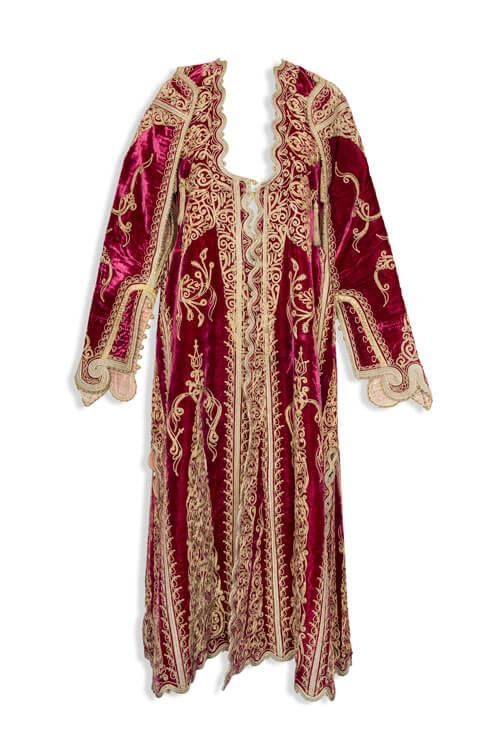 In Bosnia and Herzegovina, there is a very beautiful and ornate folk garment called “anterija”. It is an opulent overdress adorned with a lot of embroidery and decorations. The sleeves of an anterija are especially eye-catching and striking. Let’s take a closer look at this charming piece of traditional clothes. There are male anterija as well, and they are pretty and richly embellished, but female anterija overdresses are the most impressive garments. And in this material, we’ll talk only about women’s anterija.
In Bosnia and Herzegovina, there is a very beautiful and ornate folk garment called “anterija”. It is an opulent overdress adorned with a lot of embroidery and decorations. The sleeves of an anterija are especially eye-catching and striking. Let’s take a closer look at this charming piece of traditional clothes. There are male anterija as well, and they are pretty and richly embellished, but female anterija overdresses are the most impressive garments. And in this material, we’ll talk only about women’s anterija.
An anterija is an overdress or kaftan popular in Bosnia and Herzegovina (and in other countries under the Ottoman rule) in the 19th – early 20th century. It is outerwear worn over an embroidered shirt. This garment is made from velvet, brocade, silk, satin, or other costly fabrics. The most opulent and magnificent-looking anterijas were sewn from burgundy, black, and bottle-green fabric because such dark colors combine perfectly with gold embroidery.
An anterija traditionally was the outer garment for rich women, mostly in the urban areas. That’s because you can’t work in this overdress – the anterija is so decorative and its cut so intricate that women usually wore it to indicate their status and wealth. You can sit or stand in this outerwear, host guests, have a conversation with them, but you can do practically no chores in it.
The cut of an anterija is like this: it is ankle-length, with very long decorative sleeves (sometimes, hanging sleeves), the neckline is round and rather deep, the bottom part is bell-shaped, while the upper part is more tight-fitting. An anterija is open in the front and often closes with a single decorative button.

Velvet female anterija adorned with goldwork from the 19th century. It is stored in the National Museum of Bosnia and Herzegovina
All these features characterize an anterija, but a kaftan or robe won’t really be an anterija without intricate patterns – hand-embroidered or at the very least woven. The most expensive overdresses were adorned with plenty of hand-embroidery in silk and gold or silver threads. Naturally, it takes a lot of time (months, usually) to create such a masterpiece. Sometimes, the artisan who worked on an anterija moved to the house of the client to be able to work and coordinate the patterns and designs with the wealthy customer. By the way, master dressmakers who could create an anterija even had their own name – “terzi”.
Every seam on an anterija was adorned with passementerie – braiding, lace border, cord, beading, etc. The richer its owner, the wider such border is and the brighter it shines and sparkles in the sun.
To widen the skirt of an anterija, tailors used inserts, because the bottom had to be bell-shaped. Very often, these inserts were even more richly embellished with embroidery than the main body of an overdress. Partially, this is because the inserts were embroidered first and then sewn to the dress, so it was much easier to do the needlework on smaller pieces of fabric.
The sleeves of an anterija were extremely beautiful and not very functional (sure, it was done on purpose). They were long and open at the bottom – that’s why the sleeve often was much longer than the hand itself. But due to the slit, the palm was out and everybody could see the embroidered cuff and jewelry underneath.
Simpler and less expensive anterija robes were embellished with woven patterns on the fabric. Even poor women dreamed about an anterija – of course, they were simple and not as decorative. Some were without any embellishments at all. There were even home-made anterija. But women tried to get as ornate anterija as they could afford.
Today, women in Bosnia and Herzegovina don’t wear an anterija anymore. But a lot of vintage anterijas survived and are preserved in the local museums. This garment is a significant part of the local cultural heritage.


